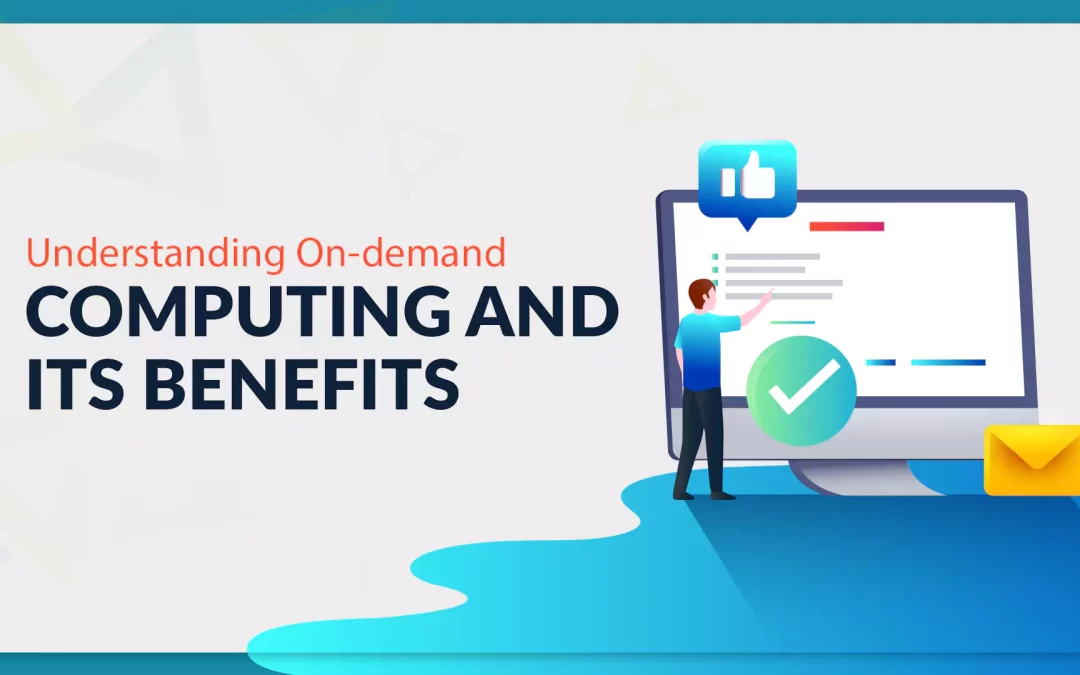What is the first thing that comes to your mind when you listen to the word on-demand? The term refers to the availability of desired services on an “as needed” basis. This means you can gain access to specific features, functionalities, or options whenever you need them.
In terms of cloud computing, on-demand computing is defined as a business model that provides companies with their desired computing services when they need them. Users can access different computing resources over the internet through the following pay-as-you-go payment option. Cloud computing, also sometimes called cloud computing, is becoming rapidly popular these days. Hence, business leaders and entrepreneurs must implement this business model to succeed in today’s digital era.
This article offers a detailed explanation of on-demand computing to help readers understand this business model and learn more about its key benefits.
So, let’s explore!
What is On-demand Computing?
On-demand computing, also known as cloud computing, is an enterprise-level delivery model. It involves the provision of required computing and technical resources on an “as-needed” basis. These resources are either managed by a third-party cloud service provider or the user’s enterprise itself.
In simple words, on-demand computing enables users across diverse locations to access their desired features or functionalities over the internet. This way, users need not pay for all computing features at once. Instead, they can access only those computing resources that are essential for their businesses.
The Need for On-demand Computing
The idea of on-demand computing originated when businesses began struggling to meet the ever-evolving demands of their rapidly-growing consumer bases. The increasing shift towards computing resources resulted in several issues in terms of price, maintenance, and ongoing support.
To overcome these challenges, mainframe providers like IBM started investing in cloud computing resources. This allowed enterprises and startups across the globe to access database storage and computing power without investing in expensive IT infrastructure.
As a result, on-demand computing significantly cut down operational costs and helped businesses meet their peak requirements with minimal resources. Moreover, it offered extended flexibility enabling companies to scale their computing resources up or down based on their organizational needs.
On-demand Computing Models
On-demand computing services are categorized into three different models:
- Infrastructure as a Service (IaaS): It allows companies to access virtual computing resources online with the help of the internet.
- Platform as a Service (PaaS): It allows users to access hardware and software tools online hosted by third-party providers.
- Software as a Service (SaaS): It allows users to access cloud-based applications and software systems over the internet.
Common Applications of On-demand Computing
Whenever we use an online service like YouTube, Gmail, or Office 365, we access on-demand computing resources online. The applications of this business computing model are vast. Here are some of the common applications of cloud computing:
- Cloud Server Hosting: It allows businesses to host their websites, domains, and databases on dedicated servers and hardware to facilitate information sharing and data storage.
- Cloud Storage: It allows users to store and access their confidential data on remote cloud storage systems maintained by cloud storage service providers like OneDrive, Dropbox, and Drive.
- Cloud Backup: It allows users to prevent their data from losing in case of a cyberattack, equipment failure, server crash, or any other event that could result in data loss.
Benefits of On-demand Computing
Given below are some of the key benefits offered by on-demand computing:
1. Accessibility
The biggest advantage of on-demand computing is that it allows users to access their desired resources anytime, anywhere. Cloud-based applications don’t need on-premises installation; rather, you can get your desired features and perform different functions online over the internet.
Similarly, businesses can access their confidential data from a central web-based hub. Hence, on-demand computing significantly improves the quality of operations and gives companies a long-term edge over their competitors.
2. Better Team Collaboration
With the rise in remote and hybrid work, businesses need digital solutions to improve team collaboration and make data-driven decisions. As a result, the demand for on-demand computing has skyrocketed because cloud-based resources allow teams across different locations to work together.
Data stored on the cloud is automatically synced between multiple devices used by several team members. This way, you can share insights, make timely corrections, and stay updated for improved performance.
3. Ease of Use
Traditional software requires on-premises installation, maintenance, and regular updates for optimum performance. Cloud computing eliminates all these requirements since cloud-based solutions are accessed over the internet without any restriction of time and location.
This makes on-demand computing a user-friendly business model. Companies can achieve their objectives and meet their desired goals by leveraging robust cloud-based solutions online. Moreover, on-demand computing also ensures that users access the updated versions all the time and stay ahead of trends.
4. Cost-efficiency
Lastly, on-demand computing is a cost-effective business model. Instead of investing in expensive IT infrastructure and resources, SMEs and startups can access cloud-based solutions online. They can subscribe to a plan that meets their business requirements and upgrade their plan as their needs evolve with time.
Eventually, cloud computing enables businesses to reduce their operational expenses and achieve long-term cost savings. These benefits ultimately lead to financial stability which is essential to succeed amid rising economic challenges.
Final Words
On-demand computing is a reliable and fast-adopted business model. The paradigm shift towards remote and hybrid work has increased the demand for cloud-based resources. Besides, companies diversifying their digital transformation plans are choosing cloud computing over traditional software to achieve long-term sustainability.
Moreover, businesses can become more resilient and competitive with cloud computing. Other benefits of this dynamic computing model include accessibility, better team collaboration, cost-efficiency, and ease of use.
Lastly, a reliable cloud computing partner is essential for business growth. Hence, choose Khired Networks as your SaaS business partner and leverage cloud-based solutions to take your business to the next level.

